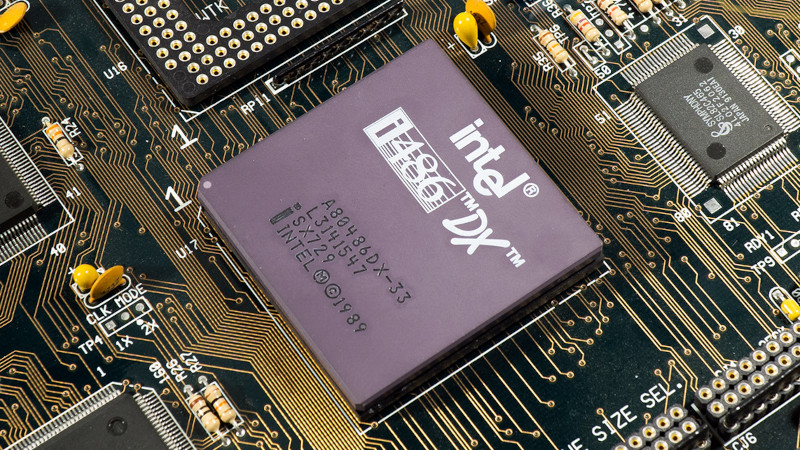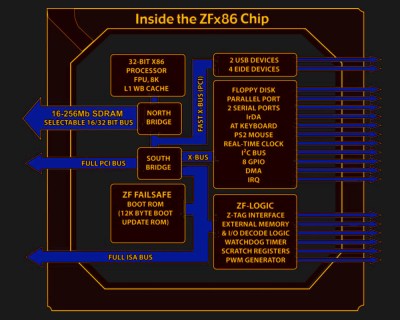
A footnote in the week’s technology news came from Linus Torvalds, as he floated the idea of abandoning support for the Intel 80486 architecture in a Linux kernel mailing list post. That an old and little-used architecture might be abandoned should come as no surprise, it’s a decade since the same fate was meted out to Linux’s first platform, the 80386. The 486 line may be long-dead on the desktop, but since they are not entirely gone from the embedded space and remain a favourite among the retrocomputer crowd it’s worth taking a minute to examine what consequences if any there might be from this move.
Is A 486 Even Still A Thing?

The Intel 80486 was released in 1989, and was substantially an improved version of their previous 80386 line of 32-bit microprocessors with an on-chip cache, more efficient pipelining, and a built-in mathematical co-processor. It had a 32-bit address space, though in practice the RAM and motherboard constraints of the 1990s meant that a typical 486 system would have RAM in megabyte quantities. There were a range of versions in clock speeds from 16 MHz to 100 MHz over its lifetime, and a low-end “SX” range with the co-processor disabled. It would have been the object of desire as a processor on which to run WIndows 3.1 and it remained a competent platform for Windows 95, but by the end of the ’90s its days on the desktop were over. Intel continued the line as an embedded processor range into the 2000s, finally pulling the plug in 2007. The 486 story was by no means over though, as a range of competitors had produced their own take on the 486 throughout its active lifetime. The non-Intel 486 chips have outlived the originals, and even today in 2022 there is more than one company making 486-compatible devices. RDC produce a range of RISC SoCs that run 486 code, and according to the ZF Micro Solutions website they still boast of an SoC that is a descendant of the Cyrix 486 range. There is some confusion online as to whether DM&P’s Vortex86 line are also 486 derivatives, however we understand them to be descendants of Rise Technology’s Pentium clone.
Just Where Can A 486 Cling On?

It’s likely that few engineers would choose these parts for a new x86 embedded design in 2022, not least because there is a far greater selection of devices on the market with Pentium-class or newer cores. We’ve encountered them on modules in industrial applications, and we’re guessing that they’re still in production because somewhere there are long-lasting machine product lines still using them. We’re quite enamoured with the RDC part as a complete 486 PC on a chip with only 1 W power consumption as our ’90s selves would have drooled at the idea of a handheld 486 PC with long battery life, but here in 2022 should we need a quick fix of portable 486 gaming there are plenty of ARM boards that will run a software emulator quickly enough to show no difference. So will the relatively small community of 486 users miss the support for their platform in forthcoming Linux kernels? To answer that question it’s worth thinking about the kind of software these machines are likely to run.
If there’s one thing that operators of industrial machines value, it’s consistency. For them the machine is an appliance rather than a computer, it must do its job continuously and faultlessly. To do that it needs a rock-solid and stable software base rather than one which changes by the minute, so is an outdated industrial controller going to need access to the latest and greatest Linux distro? We think probably not, indeed we suspect it’s probably a lot more likely that an outdated x86-based industrial controller would be using a DOS flavour. Meanwhile the retrocomputing crowd are also more likely to be running a DOS or Windows version, so it’s difficult to imagine many of them squeezing the latest and greatest into a 486DX with 16 megabytes of memory.
Memory Lane Is Not So Rosy When You Remember How Little RAM You Had
The first ever Linux that I tried was a Slackware version on a 486DX-33 some time in 1994. At the time that would have been an extremely adventurous choice for an everyday operating system, and while it was great as an experiment, I kept using AmigaOS, DOS, and Windows for my everyday drivers. It would be around a decade later with a shiny new Core Duo laptop that I’d move to permanently dual booting and eventually switching away from Windows entirely rather than only using Linux on servers, and since then several generations of PC have continued the trend. If you used a 486 for real back in the day then it’s tempting to think of it as still somehow a contender, but thinking how many successive platforms have passed my desk in the intervening years drives home just how old this venerable platform really is. We’ve taken a look at the state of the 486 world in the paragraphs above, and we’re guessing that the support for 486 processors will be missed by very few people indeed. How about you, do you run a 486 for anything? Let us know in the comments.
Header image: Oligopolism, CC0.
Bye Bye Linux On The 486. Will We Miss You?
Source: Manila Flash Report
0 Comments